Exhibition features alternative ways to approach history
By Shim Woo-hyunPublished : Feb. 26, 2019 - 17:33
A train of cartoonish drawings by Lee Woo-sung encircles the gallery space of Ilmin Museum of Art. The small, square drawings, which look like cuts from a webtoon, or Instagram pictures, are fragments of the artist’s memory of photographs stored in his cellphone, the artist said.
“Years ago, I started asking questions about the ways in which people store photographs on online social media and in their cellphones. Then, I thought I could just draw the photographs stored in my own one. I thought I could make stories out of them,” Lee told The Korea Herald at a press conference Thursday at the Ilmin Museum of Art.
“Years ago, I started asking questions about the ways in which people store photographs on online social media and in their cellphones. Then, I thought I could just draw the photographs stored in my own one. I thought I could make stories out of them,” Lee told The Korea Herald at a press conference Thursday at the Ilmin Museum of Art.
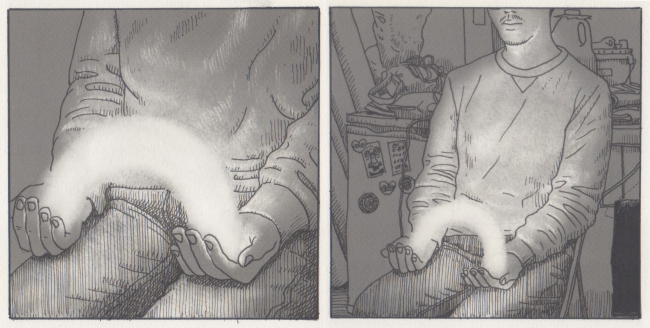
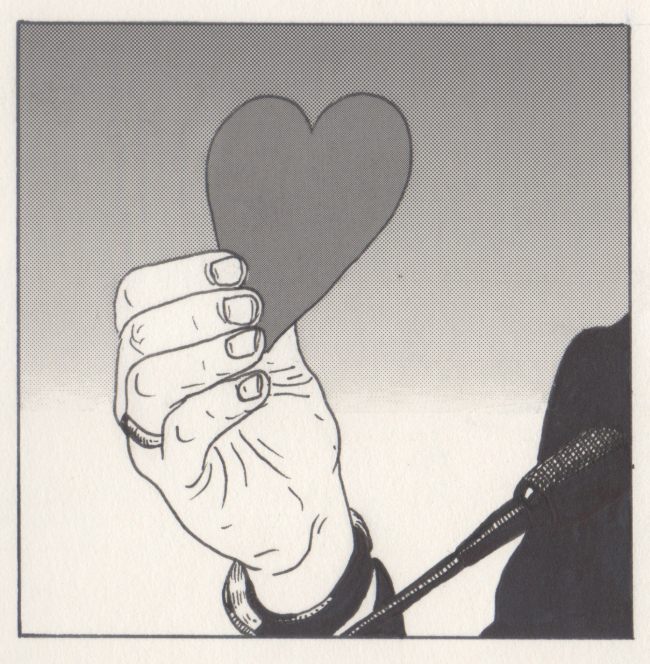
The museum is holding a group exhibition of six visual artists under the title of “Immortality in the Cloud.” Cho Eun-ji, Kang Yi-yun, Kwon Ha-youn, Lee Woo-sung, Suh Young-sun and Fabien Verschaere suggest alternative ways to talk about history in an era full of new means of expression, as well as of online platforms where innumerable streams of communications flow.
“If you think about history as we know of it, one could become overwhelmed by its grandness. These drawings, instead, are rather microscopic details of my own history,” Lee said.
Lee’s 300 drawings from “Night, Walk, Memories” (2017-2019) are lined up on the walls in a linear manner, but they do not add up to a master narrative. One drawing’s relationship to another is loose. Each drawing, instead, is fixed to a piece of the artist’s memory.
For instance, one drawing shows the first-person perspective of watching TV news about the financial crisis in 1998, and next to it is another depicting a wedding ceremony.
The images that Lee has drawn are those viewers might have in their memories or in photos stored in their own mobile phones. “I hope the viewers think of their own images or stories while seeing my drawings,” Lee said.
Kwon Ha-youn’s video work deals with a personal narrative, particularly a story that her former drawing teacher Daniel told her.
In her seven-minute video work “The Bird Lady” (2019) -- a screening of her virtual reality work of the same name came out in 2017 -- Kwon visually renders her first drawing teacher’s telling of a house in Paris.
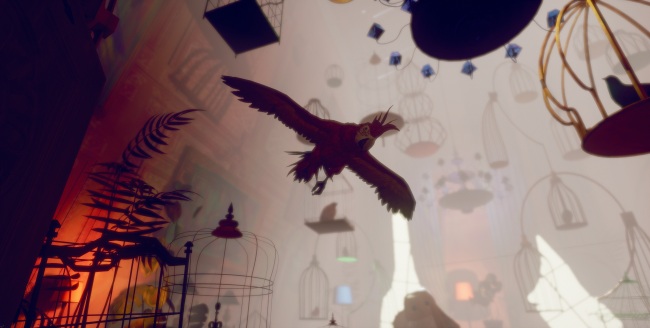
The house, which Kwon has created by reorganizing the story she was told some time ago, shows new possibilities in retelling a narrative orally passed down.
“A Portrait of a Woman With a Black Umbrella” (2019), a video work by Cho Eun-ji, is a new attempt to show the personal history of a woman named Sri Muhayati who survived the 1965 Indonesian Massacre.
Cho’s video -- a collage of muted footage from an interview -- highlights an old female victim’s gestures and wrinkled body parts to retell her painful story.
“I trust more the memories inscribed by bodily movement than those that are ignited by language,” Cho has explained.
Suh Yong-sun’s illogical and nonlinear insertions of paintings and sculptures between preinstalled artifacts and historical documents in the press museum on the fifth floor of the museum is another effort to question the notion of history.
Suh’s works, which deal with Korean history, aboriginal mythologies, religion and ordinary people, recontextualize the press museum that chronologically displays the main events of the last 100 years in Korea.
Fabien Verschaere created paintings and sculptures based on his research trips to Jeju Island, Busan and Seoul, interpreting Korean mythology, traditional culture and history from a foreign perspective.
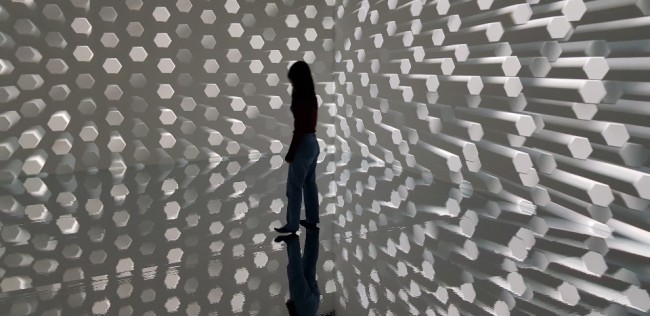
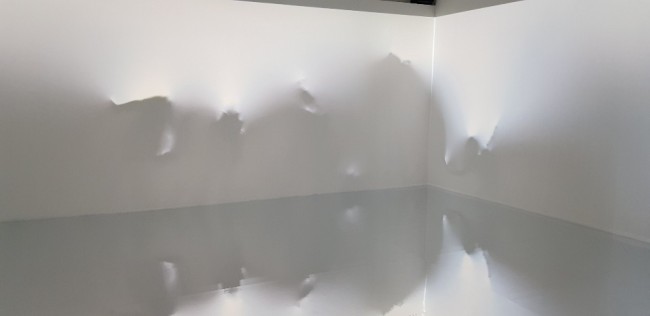
Kang Yi-yun’s “Continuum” (2019) is an installation work created using a recent technology called projection mapping.
With the technique, Kang has created a space where myriad computerized images constantly move on the walls, suggesting the time and space of the current era require different modes of perception.
Several projection inserts, which show traces of dancers’ movement on a large curtain as they move or flounder behind it, are the artist’s poetic take on lost selves in a highly digitized world.
“The ways in which people perceive and consume history has changed a lot along with the development of technology and advent of new platforms to consume culture. Images take a great proportion in that. This exhibition of six different visual artists offers a glimpse into what the new ways are in dealing with history,” curator Cho Ju-hyun said.
By Shim Woo-hyun (ws@heraldcorp.com)




















![[Today’s K-pop] BTS pop-up event to come to Seoul](http://res.heraldm.com/phpwas/restmb_idxmake.php?idx=642&simg=/content/image/2024/04/17/20240417050734_0.jpg&u=)